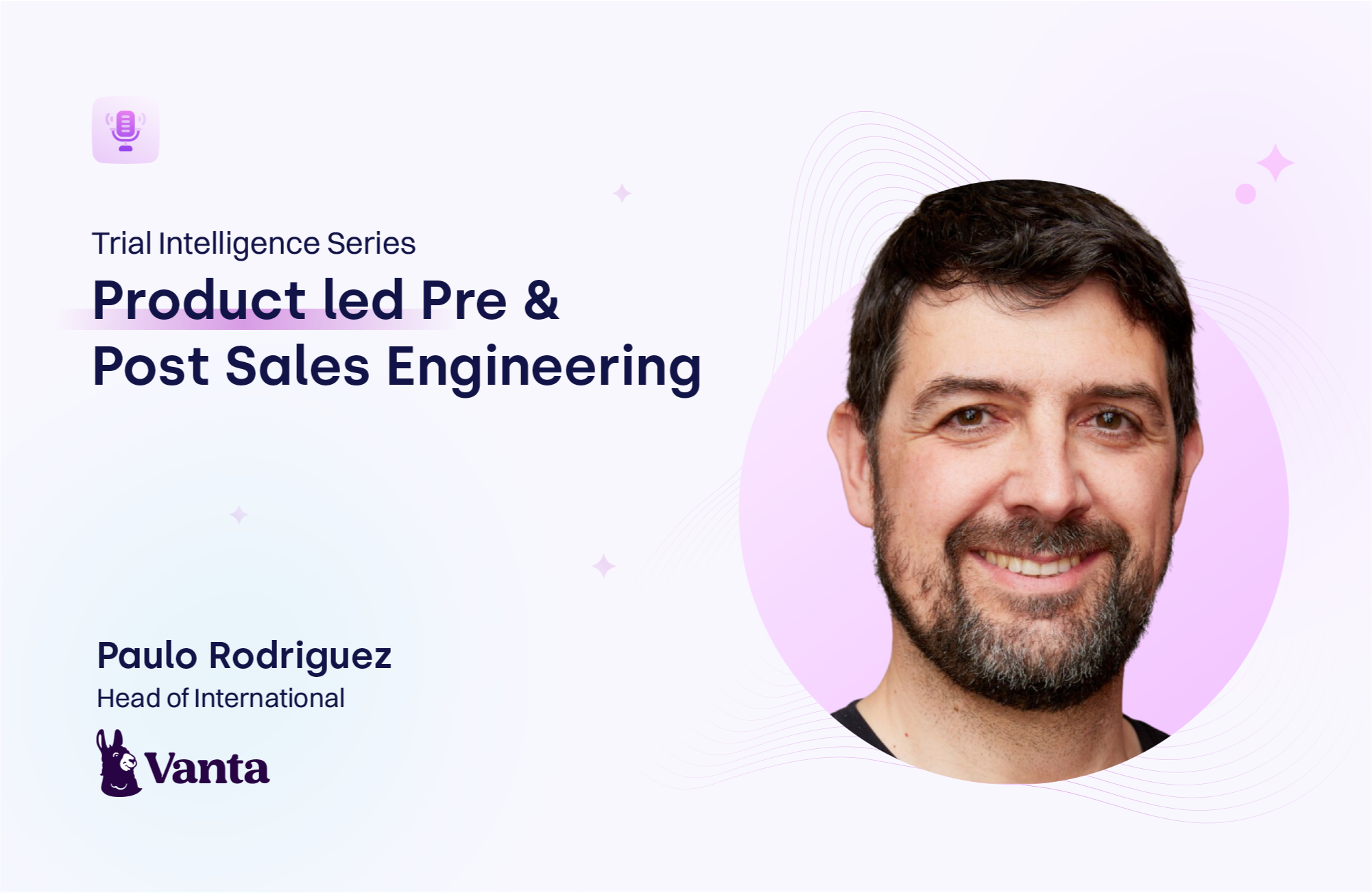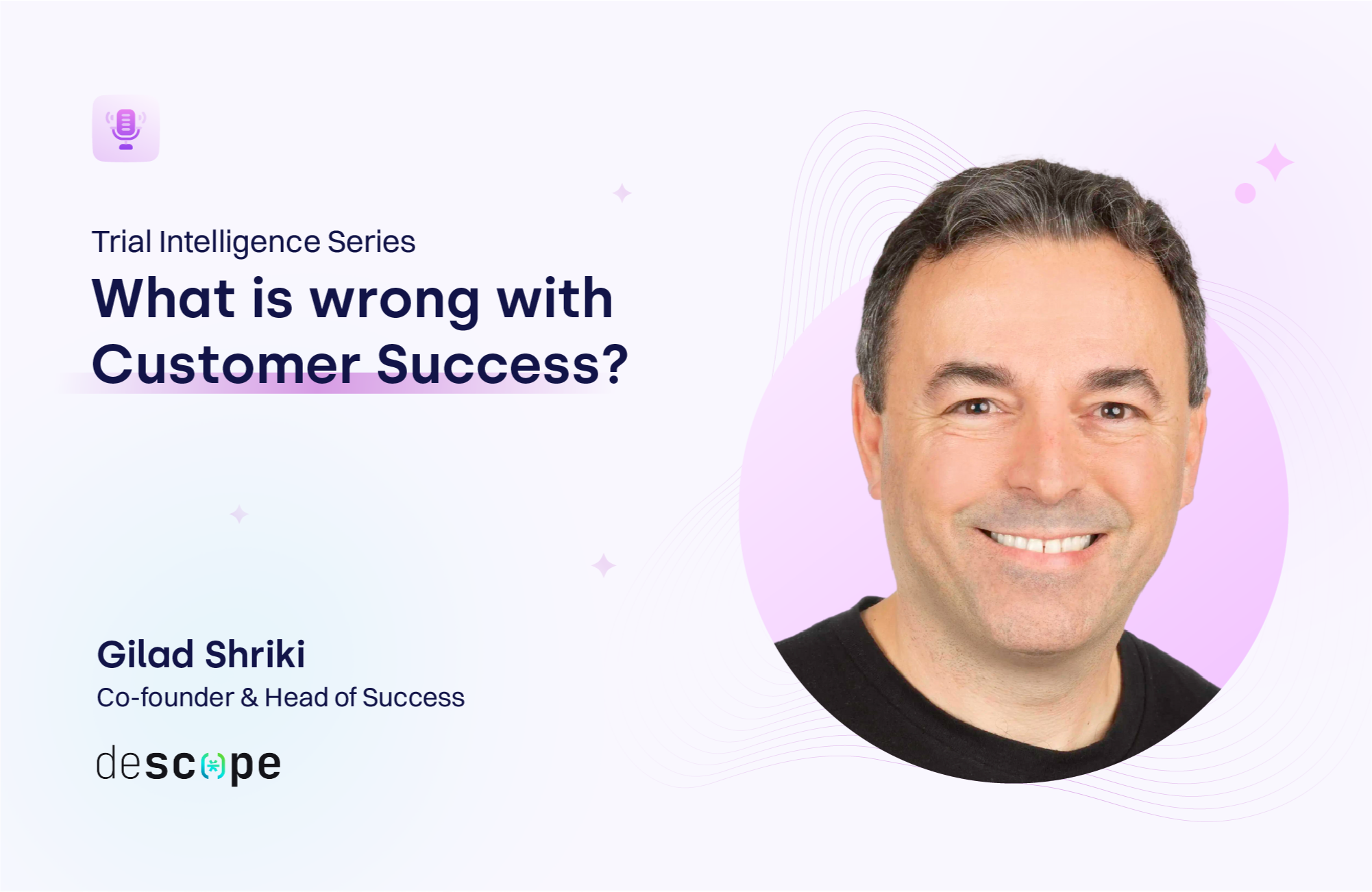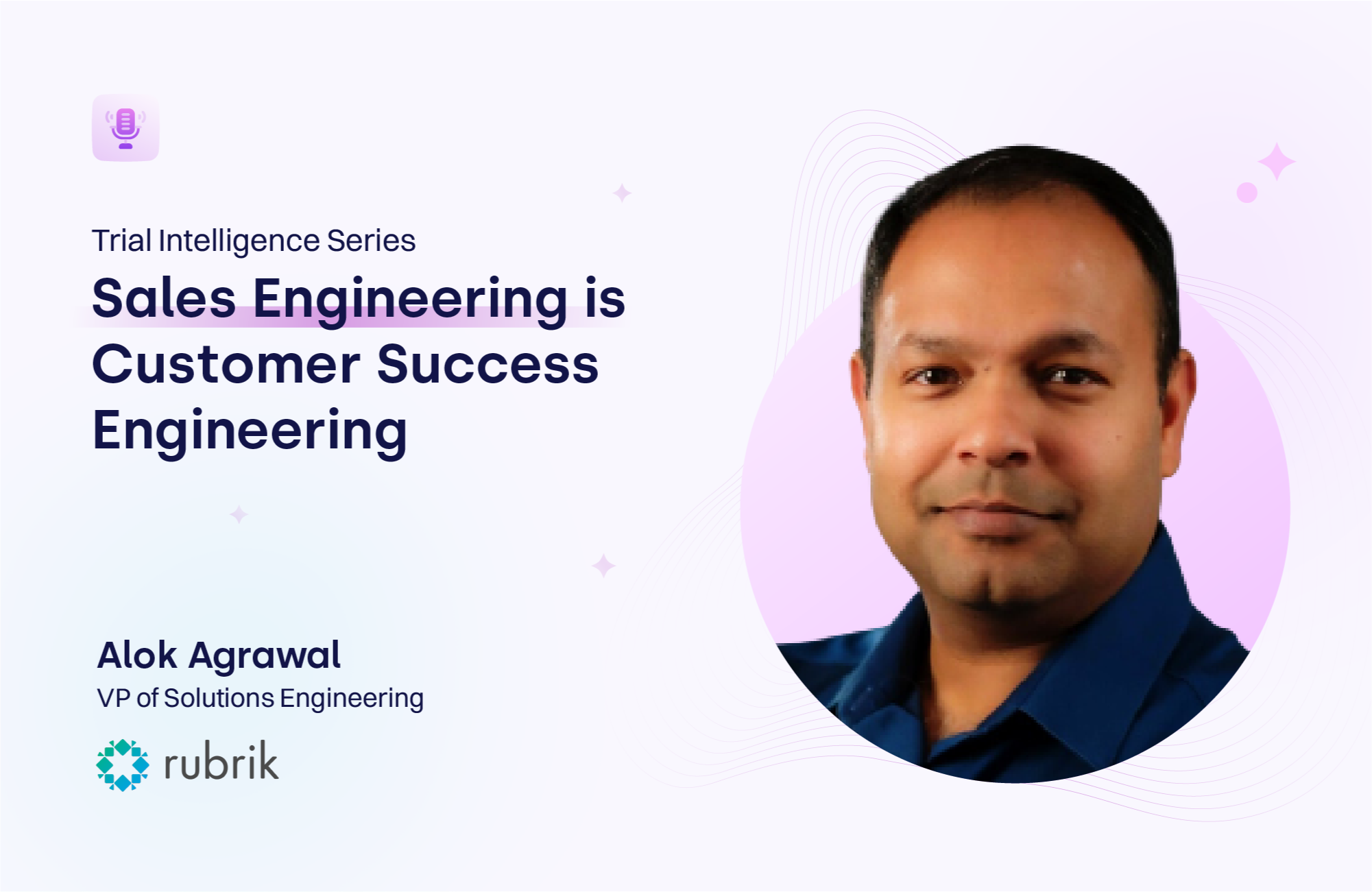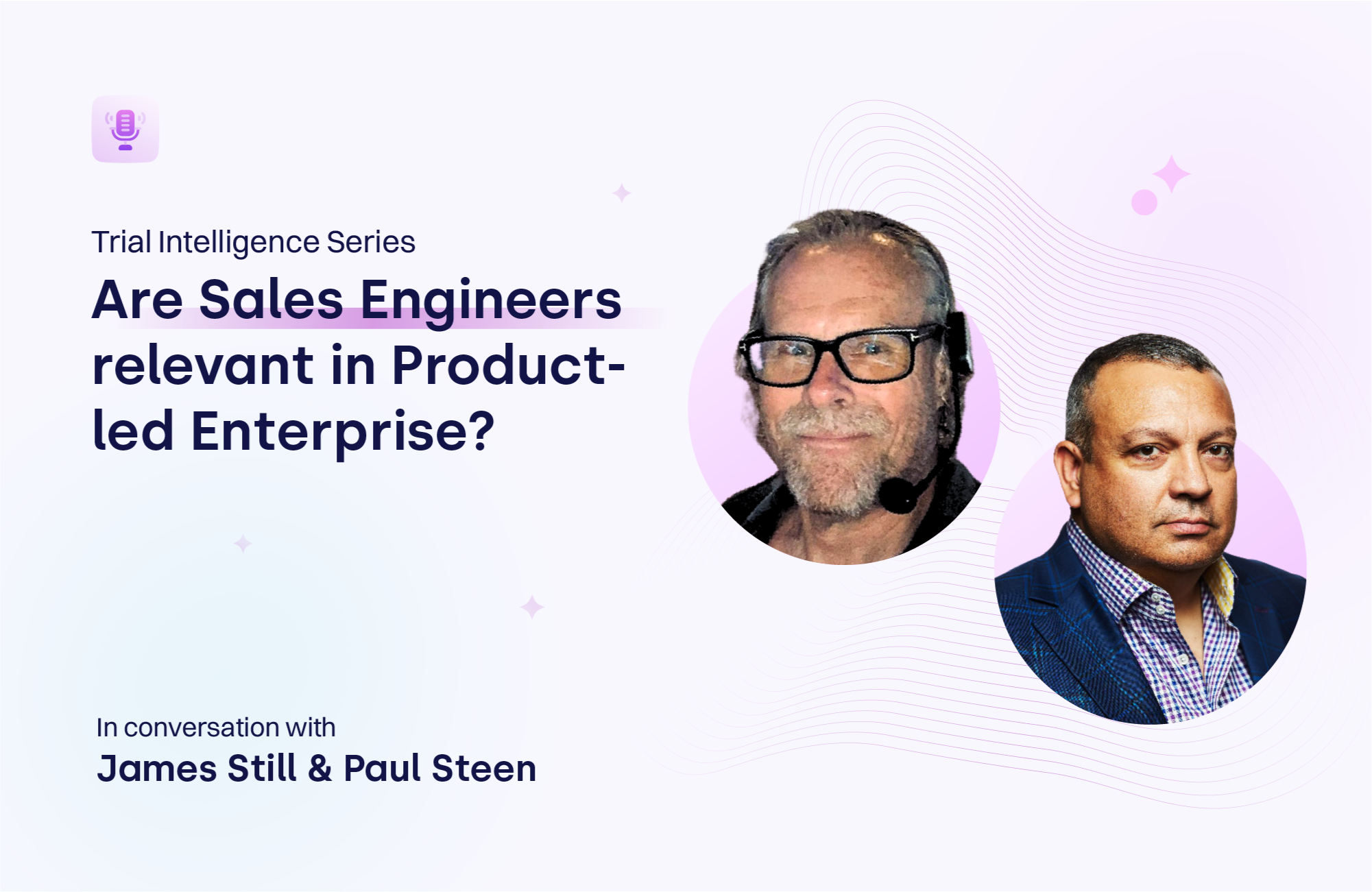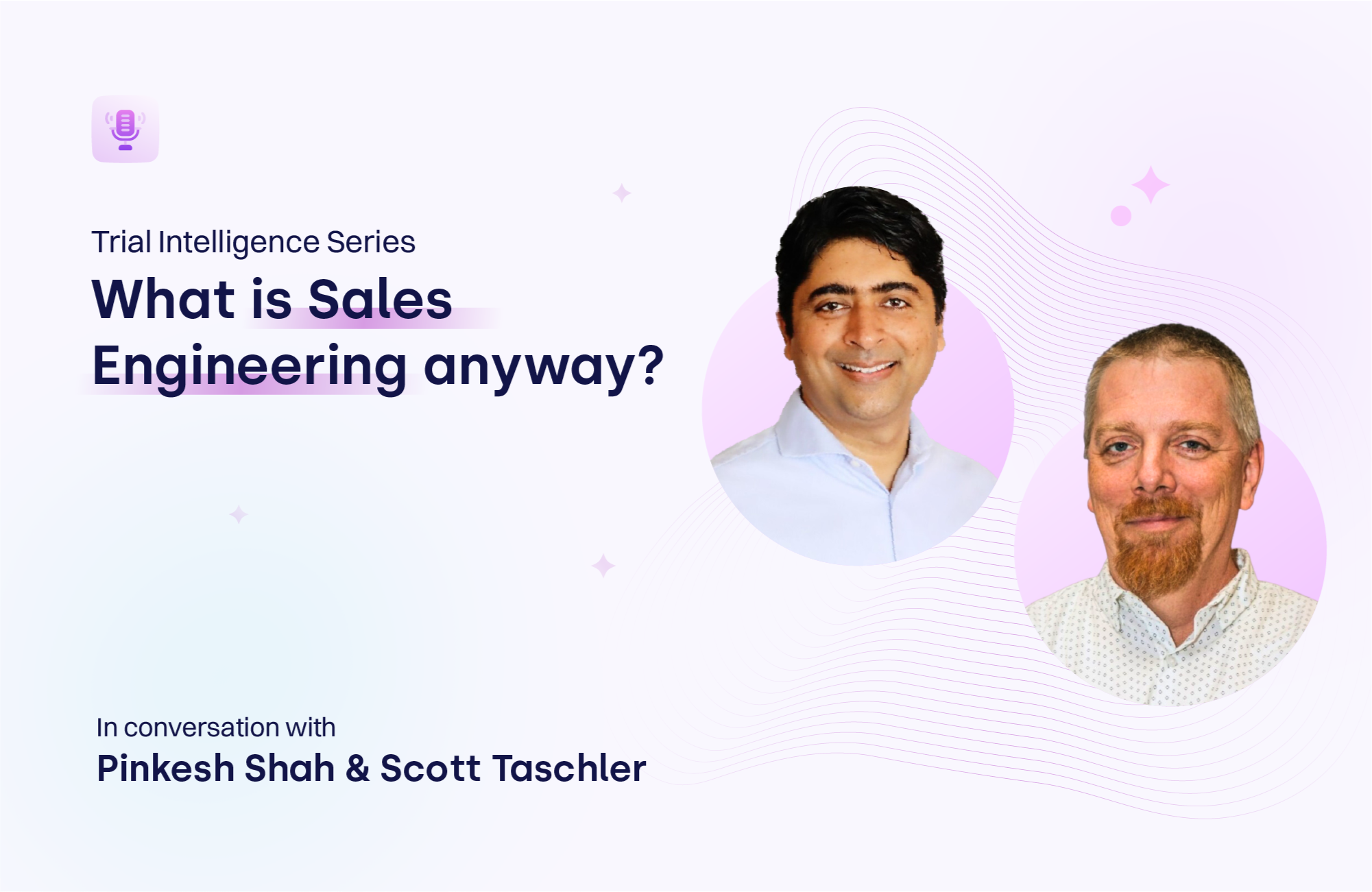TL/DR - In the last decade, user personas' engagement with sales engineers has reduced, and one needs more than mere anecdotal evidence to evaluate the progress of sales trials. With product automation, the missing trifecta of sales and marketing automation, sales engineering teams can engage end customers & assess the progress of sales trials. With that approach, you can marry a top down-evangelical sales with a product-led, data-driven sales engineering process.
Alok Shukla, in a conversation with Varun Badhwar, Founder/CEO of Endor Labs, Former GM/SVP of Prisma Cloud at Palo Alto Networks, on it's imperative for sales engineering to embrace data-driven approaches, move away from anecdotal evidence, to align with contemporary sales experience.
👉 Listen now on Apple Podcast, Google Podcast, and BuzzSprout.
Or, you can watch the video podcast. 👀
Chapters
0:08 Introduction
3:05. Sales process at RedLock
4:39 How was the product trialed at RedLock?
6:38 Change of GTM over the last 8 years
8:26 How to deal with a user persona that does not want in-person engagement?
13:24 Crystal balling 2023 for Startups
15:45 Why is product telemetry crucial for GTM?
18:03 How do Sales engineers conclude PoC is going good?
21:51 Should Product Managers be incentivized?
24:11 Product Automation is the missing trifecta of automation
Transcript below
Introduction
I've been in cybersecurity now for about 16 years. I did my undergrad in computer science and figured out that I wasn't the smartest software engineer. But what I loved doing was being on the business side of technology, and I had to quickly find my way into what the calling would be. Ended up in cybersecurity consulting. One of my early clients was salesforce.com. They ended up hiring me for about four years.I was there in the very early days of Salesforce, and I got a lot of inside perspectives into cloud security before cloud security became a thing of its own. And since 2010, I've been building companies.I built the first company in the CASB space. Subsequently, in 2015, built a company called RedLock in the cloud security posture management (CSPM) space, and Palo Alto Networks acquired that. At Palo Alto Networks, I created what many might be familiar with as Prisma Cloud. After three years at Palo Alto Networks, I am now off to build Endor Labs, which is focused on code security.
Why did you choose “Evangelical Sales Process” as your primary GTM at RedLock?
It is a great question.
I think what I've found in my career, I've fortunately or unfortunately always ended up working on things that I'm just seeing around the corner, but it's not a mainstream market. Going back to the Redlock days in 2015, people didn't know what to ask for and what solutions they were looking for
There was no well-established Gartner category for what RedLock did. So we had to adopt an evangelical sales process, which required us to get in front of as many customers as possible and drive education and awareness about the potential implications of using the cloud in an ungoverned manner.In many cases, the best approach we found was to request a customer to give us API access to their cloud to show them in their environment, live, the kinds of things that we could surface.Our approach was three-pronged:The First was to convince people that they need a better grasp on the cloud because it is here to stay and grow.Second, to deliver value, show live in their environment the potential problems and risks you were uncovering.Third, we needed to help them how to build a business case for their CFO for what would typically be an unbudgeted expense. This was something they had yet to think about in advance.
So it was an evangelical sales process from the pitch, POC, and ultimately closing the deal.
What did your product trial process at RedLock look like?
We needed to get the CISOs buying to understand that this is a problem they want to start investing in and solving. And so, we found that the base success was that we would have an hour call to explain the product's value proposition.The next step was typically a POC where we would come in in a meeting and help them connect through the APIs. There were no agents or proxies. It was a very lightweight deployment. We would connect, and by the end of the meeting, we would walk away having produced a baseline set of results for them and let them play with the product on their own.
But I will say eight out of 10 times; there would be a holy shit moment. And I can't tell you how often our POC process turned into war rooms because the customers saw things they were never supposed to see in these environments.
And so those are the best moments you can create to drive urgency for a product purchase.
Has the approach for GTM changed from 2015-2019 (Redlock days) to Endor Labs (2022-)?
You know, it's, it's funny, Alok, if I was in 2021, before this downturn, I think we would all be vying for usage and adoption and care much less about revenue.
It's a balance today. I won't be rewarded as a CEO and leader of a company either from investors or outsiders if I have 1000 free users, and a year later, I still have negligible revenue.
So, I'm trying to optimize for both.I'm still doing this evangelical sales process, so I need to go top-down. I need to get the buy-in.But here is what has changed.One is that engineers in Endor Labs products play an instrumental part in the success or failure of POC. I'm not only worried about the UX and UI of the product but also about DX (developer experience) around the product.
The
second
thing is to condense and shrink the sales cycles, even though our website does not offer free trials for Endor labs.
We have created a POV guideline that we share with all our customers where it's usually a five to seven-day process, believe it or not, for an enterprise product.
Developers, or the Gen-X/Millennials, generally avoid salespeople talking to them. So how do you know the progress of trials?
Yes. And often, we're being brought in for POCs by security teams, and those teams are then taking our product behind the scenes to their engineers.We need answers to many questions, like —>
Who's onboarding?
Which code repos are they onboarding?
Which connectors are they driving toward?
Did they put us in a CI?
You know, just trying to gauge the behind-the-scenes what's transpiring when we're not on the call with a customer is supercritical. And this is where I'm sure we'll talk more about this product-driven telemetry that allows us to understand what's happening behind the scenes.
So, how do you know and measure what your prospects doing in such a top-down evangelical sales yet behind-the-scenes sales engineering process?
All of us drive our enterprise behaviors and our buying behaviors through what we do at home and what we do through consumer products.If you think about it - how many consumer products have this beautiful nudging framework, as I call it, right? Like on LinkedIn, it says you have completed 69% of your profile! If you do this one more step, you'll be here.You're gamifying the whole experience of onboarding. You'll get emails like, oh, I noticed you last came back to our service a year ago; here's a 20% coupon; come back in.Right? People are trying to look at our behaviors as consumers of consumer-oriented products.The question is, why don't we do enough of that in enterprise products, which is something we take for granted in consumer products?And I think, I like, for me, having a product partner that I use in my company that knows when I'm stuck somewhere and instead of waiting for me to put a support ticket, reach out to me or say, “Hey, I noticed you tried to upload this. It didn't work. Here's a proactive solution”.That is much more appealing, not just from a product perspective but also evaluating the company I'm looking to partner with and invest in.In most enterprises, people buy different tools yearly, so I must impress my prospect with my product, support capabilities, and experience working with us.We need product telemetry and data to drive this superior trial experience.
How do you use the data to inform your sales engineering team? That this is the right time to go and talk to a user.
So, I'll be perfectly frank. Do we have all these systems built out and humming and hinging together? No.Where I would like it to go is signals that directly go from product signals that we ultimately define as our playbook. So, okay. You know, the customer's taking this action; for example, somebody has connected their code repo signals that there's some point in their onboarding journey.Another signal could be that the user found a vulnerability and subsequently remediated that problem. This signal that the user found it valuable enough to resolve that. So, you define your signals for your product and business.
How should GTM teams use this data? Where should this data live?
Ideally, you feed this data into the tools that your GTM teams live in. So, if it's for marketing, it goes into HubSpot; for sales, it goes into Salesforce. You know, whatever tools you're using from where you drive automation. And the reality is that these stacks are fragmented, right?
You almost need this middleware, if you will, where you're bringing in the product, telemetry, product data, somewhere to the middleware from where you're then feeding into these various end systems for your sales teams, for your marketing teams, for Sales Engineers to meet them where they typically are tracking their business ultimately.
You want to reach a point where you can challenge a sales rep on their pipeline commit call based on what you see in the evaluation signals.
If your customer hasn't even onboarded the code repo and the sales guy's calling it a 90% chance of closing the deal in 30 days, I will challenge that.
That is easy to say, but no funnel exists in a PoC process. In most sales funnels, PoC is just a single step. How do you measure the progress of a single step?
It's very hard. Most of my Red Lock team had built spreadsheets to do this. Like, it's so funny that you have a CRM for all the business forecasting, but there's this massive hole in the middle of the process, arguably the most critical process in any sales motion in the enterprise.
That is between POC started to POC concluded, what the hell's happening here? Right?
And in Salesforce, people have a stage that says POC started, and then they have a stage that moves forward that says POC closed. And there could be deals sitting there for a week, 30 days, or 90 days, depending on your sales cycle.And I want to know what, during that most critical stage, exactly is going on.Unfortunately, my team had to go use spreadsheets to track that. And as you know, as soon as you get into spreadsheets, it's error prone and manual and only as good as people are completing the data. And it's still anecdotal, not data-driven.We need Data-Driven Sales Engineering.
How does the current macroeconomic change the game for startups in 2023?
I wonder if you can have a one size fits all answer. It depends on what your business is, who your target audience is, and what your ideal customer profile is.If you're much more in a transactional business, well-established idea, and want people to have easy access to the product, it's a PLG first.However, suppose you are in a situation we are in, where you're trying to evangelize new concepts and other aspects. In that case, you need to focus a lot more on the executive sponsors and get to the users and other influencers in the company; in other words, adopt a top-down motion.
In most companies, you will likely find that it's not either PLG or Enterprise. In B2B SaaS, you will probably end up somewhere in the middle, which is the hardest place to be because you want to do both.
And as you know, how do startups, especially in this market with limited resources, optimize for a bottoms-up and an enterprise sales function? You want to talk to the top person to get a sense of interest and opportunity, get buy-in for the PoC, and then be able to get to a PoC.In my case, once we get to a PoC/Trial, I always tell my team that within a 60-minute conversation, we should be able to go from set up to first-time value experience. After that, we should be able to prioritize our trials based on signals because all of us are trying to do more with fewer resources.
Should product managers be incentivized to make the go-to-market process simpler?
A 100% agree. If you think about it, your CEO is the first Sales Engineer in a startup. The product managers must be the next best SEs. And the actual SEs can be in that sequence and then help you scale. I am not trying to marginalize a sales engineer’s role, but nobody else can if a CEO and a product manager can't sell.And so, if you follow that equation, a significant component of a product manager's goal should be, how do I enable my sales?Interestingly, at Endor, we're just doing our goal settings for next year, and we are going to another level.Sales enablement is not just a goal for my product manager. Sales enablement is a goal for my engineers too. We want to hit a certain ARR - so every engineer has that goal, too - how do you break it down and enable your part in achieving that goal?
Thank you for reading FunnelStory. This post is public, so feel free to share it.


